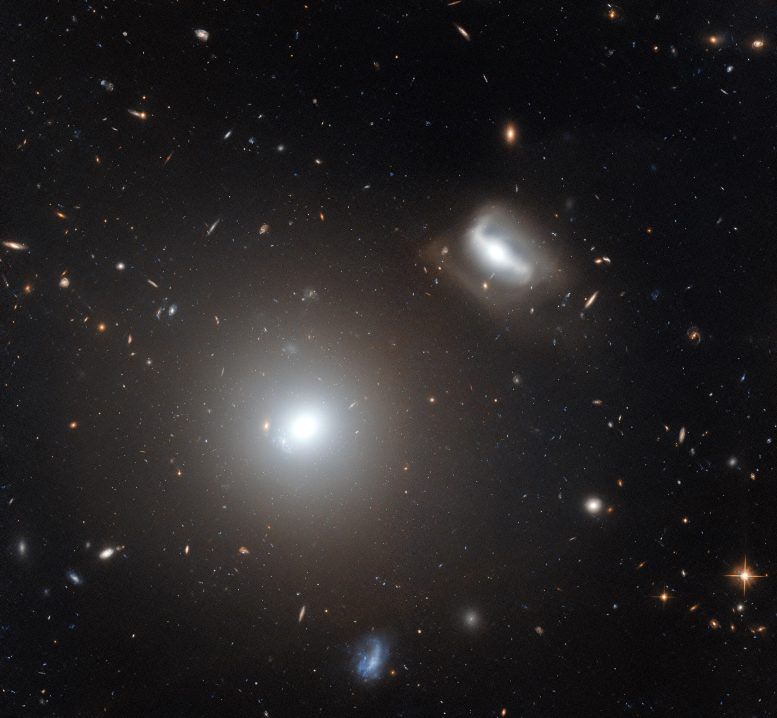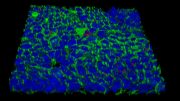
Two galaxies, NGC 3558 in the lower left, and LEDA 83465 in the upper right, are featured in this Hubble Space Telescope image. Separated by a distance of roughly 150,000 light years, they are incredibly close neighbors in galactic terms. Credit: ESA/Hubble & NASA, M. West
This Hubble Space Telescope Picture of the Week prominently features two galaxies: NGC 3558 in the lower left, and LEDA 83465 in the upper right. Both galaxies lie roughly 450 million light-years from Earth. The two galaxies are separated from one another by a distance of approximately 150,000 light years, which might sound vast, until we consider that our nearest galactic neighbor — the Andromeda galaxy — is a whopping 2.5 million light years distant from the Milky Way galaxy. In galactic terms, the two galaxies pictured here are practically on top of one another.
This is because they belong to a crowded and chaotic galaxy cluster known as Abell 1185, which is packed with galaxies that are interacting with one another via gravity. These galactic interactions have sometimes led to dramatic results, such as galaxies being torn apart completely. This fate has not befallen NGC 3558, which currently retains its integrity as both an elliptical galaxy and a low-ionization nuclear emission-line region, or LINER. In fact, it probably attained its present form by devouring smaller galaxies in the cluster — galaxies much like LEDA 83465.
Understanding LINERs
LINERs are a particular type of galactic nucleus or core, and are distinguished by the chemical fingerprints written into the light that they emit. As their name suggests, LINERs emit light which suggests that many of the atoms and molecules within these galactic cores have either been weakly ionized or not ionized at all. Ionization is the process by which atoms or molecules lose or gain electrons.
In galaxies, it is driven by a variety of processes — from shockwaves traveling through galaxies, to radiation from massive stars or from hot gas in accretion discs. In the case of LINERs, this means that many of the atoms and molecules within the galaxies have lost either a single electron, or have retained all their electrons. The mechanism that drives this weak ionization in LINERs such as NGC 3558 is still debated amongst astronomers.









Be the first to comment on "Hubble Space Telescope Captures LINER on Collision Course"